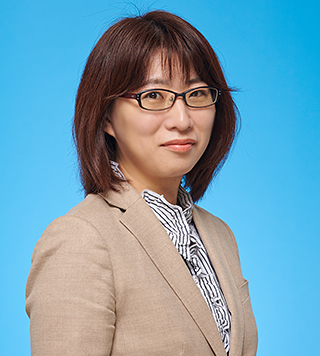Video ProfilesResearch
October 2024 Issue
Advanced analysis of martensite microstructures based on crystallography and kinematics
Yuri Shinohara
Associate Professor, Department of Mechanical and Intelligent Systems Engineering
Yuri Shinohara focuses her research on metallography and crystallography, particularly the study of martensitic transformation in metallic materials. This non-diffusive crystal structure change is significant for its broad industrial applications. A key example of martensitic transformation is observed in iron, where austenite converts to martensite upon cooling and reverts upon heating. This transformation underlies applications in shape memory alloys (SMAs), such as nickel-titanium (Ni-Ti) alloys, which revert to their original shape upon heating after deformation. Additionally, martensite formation is critical in strengthening materials like martensitic stainless steels used for high-strength fasteners.
Shinohara’s research seeks to clarify why martensite forms distinct morphologies, such as triangles, zigzags, and hexagons, particularly in iron-based SMAs. These morphologies are not only of scientific interest but are also crucial for practical applications since they directly influence the shape memory effect and mechanical properties of these materials. For example, in Ni-Ti alloys used in medical devices and robotics, the ability of the material to return to its original shape is a result of its martensitic microstructure.
Traditional crystallography has focused primarily on the interface between austenite and martensite but has not provided a full explanation for the observed morphologies. Shinohara’s research addresses this limitation by integrating kinematics with crystallography to gain a more comprehensive understanding. This approach is complemented by the use of advanced imaging techniques, including scanning electron microscopy (SEM) and transmission electron microscopy (TEM), to observe and analyze the martensitic microstructures in detail.
The Shinohara and her team have theoretically analyzed and identified misfit at the martensite/martensite interfaces as a key factor influencing morphology formation. For instance, in Fe-Ni-C alloys, specific morphologies such as spear, wedge, and kink are favored so that misfit is minimized. The research showed that these favorable morphologies could be predicted by considering both the austenite/martensite and martensite/martensite interface information. Nearly 2,000 martensite plate pairs were analyzed to validate these findings, demonstrating that spear, wedge, and kink morphologies accounted for over 70% of the observed microstructure.
Moreover, the study explored three-dimensional cluster formations of martensite plates, examining combinations such as double spear, double kink, and diamond configurations. It was found that clusters like the diamond shape accumulated significant misfit (up to 10°), making them less favorable for formation. In contrast, configurations such as double spear and double kink showed no misfit.
The team achieved a significant milestone by successfully visualizing the misfit within the microstructures using a misfit map, which provided detailed insights into how misfit varies at different interfaces. For example, martensite plate pairs with minimal theoretical misfit showed little to no observed misfit, while those with significant theoretical misfit displayed clear misfit that decreased away from the interface.
Shinohara’s ongoing research aims to further elucidate the relationship between these martensitic microstructures and their mechanical properties, which could lead to the development of new materials with tailored properties for specific industrial applications. She stresses the importance of interdisciplinary collaboration, inviting researchers from various fields to join in advancing this area of study.
Research Keywords:
metallography, crystallography, martensite, shape memory alloys, steel
References and further information


1. Y. Shinohara, S. Akabane, T. Inamura, Analysis of variant-pairing tendencies in lenticular martensite microstructures based on rank-1 connection, Sci. Rep. 11, 14957 (2021).
https://doi.org/10.1038/s41598-021-93514-z
2. Y. Shinohara, M. Hishida, Y. Tanaka, T. Inamura, Analysis of thin-plate martensite microstructure in steel focusing on incompatibility and its visualization, Acta Mater. 259, 119275 (2023).
https://doi.org/10.1016/j.actamat.2023.119275
3. N. Takahashi, S. Shinozaki, Y. Shinohara, Y. Tanaka, H. Kawata, T. Inamura, Geometry of butterfly martensite in Fe-18Ni-0.7Cr-0.5C alloy, ISIJ Int. 64, 202-211 (2024).
https://doi.org/10.2355/isijinternational.ISIJINT-2023-277
Shinohara Lab Website
https://researchers.uec.ac.jp/search/detail?systemId=29a35663ff7eca4f520e17560c007669&lang=en


